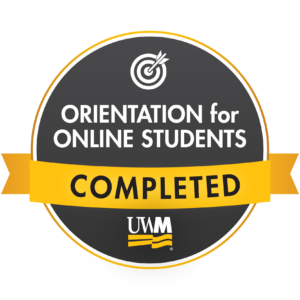
So you earned a badge in Canvas, or you received an email informing you that you received a badge through something called Badgr. What exactly does that mean?
A badge is a visual representation of some sort of achievement. Maybe you participated in an event on campus. Maybe you completed a series of tasks or modules in Canvas. Maybe you completed a course or a learning pathway. Regardless of your achievement, you received the badge because you met the requirements defined by the issuer, which could be an instructor, department, or program. When you earn a badge, you can:
- Share your badge on Facebook, Twitter, and LinkedIn
- Embed your badge on a website
- Distribute a link to your badge
Badges issued to you through Canvas and Badgr are digital, which means that there is both an image associated with the badge and some information—called metadata—encoded within that image that lets people know what you did to earn the badge. Metadata is important to those who might need to verify your accomplishment, such as a potential or current employer. One great advantage of digital badges is that you, as an earner, can share them through social media or on websites, so it’s easy to boast (in a good way) about your accomplishment.
As for Badgr … Badgr is the badging platform used at UW-Milwaukee for receiving and distributing badges. Although you do need to create a Badgr account to access your badges, the good news is that Badgr is free. Once you create an account, the Badgr Backpack provides a convenient solution for organizing your badges. You can put together collections of badges and share them out through social media or on websites. For more information, check out Badgr’s full suite of support documentation.